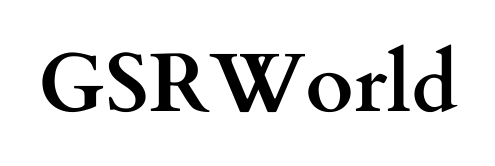Have you ever wondered why there are so many books, courses, apps, coaching programs about soft skills, personal performance, mind-body balance, etc.? Why are we ready to invest time of our life and our money in studying them?
On a personal level, I guess, there might be a variety of reasons, but in general it brings us to the idea of fulfilling one’s own potential. It feels almost as some kind of human instinct: to always do better, look for opportunities or new solutions. In a way, that’s exactly what’s needed now, when a lot of possibilities are already in place. To give some examples: being professional nowadays means having ability to think and act independently, be flexible, contribute with ideas and find solutions. For the most of remaining tasks there are automatisation, algorithms, apps and even AI. Having a family is about sharing experiences of being together, as most of the chores that used to be time-taking once, nowadays are simplified, automatised or gone.
So how do we do that? Quite often we use adaptation: adapt experience we have from before to the situation we are facing at the moment, adapt ideas from the books, courses, programs to the personal scenarios we want to change. However, sometimes adaptation does not work well enough. Sometimes to change something means to transform rather than adapt.
That’s where GSR method comes in place. It is a tool that gives opportunity to work on personal inner states, feelings, resources. The main idea is that our previous experiences (both personal and family ones) create multiple filters through which we perceive, judge upon and, finally, act. Why feelings? Are they, actually, that important? There is a well-known “Thomas theorem” in social sciences: “if men define situation as real, it is real in its consequences”. The theorem focuses on actual, “objective consequences of human subjectivity”, to put it differently: a natural part of decision-making is our perception of situation, the way we define and feel about it. One and the same situation may cause different reaction and different outcomes for two different people due to previous experiences, behavioral patterns, family scenarios. Therefore it is equally important what we know about situation and how we relate to them. Another thing is that quite often our inner states consist of a cluster of feelings. As an example, just imagine that you are late for work and you see clearly that a feeling of “being late” consist of: anxiety, shame, pity for yourself, frustration, etc. GSR gives a way to work on this combined feeling by first registering it as a whole and later splitting it into separate scenarios to work on during a GSR-session.
On a practical side GSR as a tool allows to anchor the inner states onto an “outer” object, a blank card, and to start working on it. In a way it has some resemblances with projection method used in psychology. However, there is no need to be a psychologist to realise that we use such an anchoring daily. Imagine a kid, who goes for the first time to a kindergarten. Quite often he will be allowed to take a soft toy with him. This toy will be an anchor for feeling of being connected to his home, parents, everything that he might miss at his first day in a new place. Another example that almost everyone hear as a child: if you feel frustrated, you can hit a pillow. In this case we also project inner state into outer object. You can easily think of more examples. In GSR the inner state is projected onto a blank paper card. In a way it is the most neutral “object”: no additional meanings, no extra symbols. GSR makes one more step: to project your “self” in the same way. That’s how a GSR-session field is being created. That’s how someone who practice GSR gains assess to the scenarios, described earlier.
There are three major domains, questions that GSR is addressed with.
First, it focuses on psychological health and well-being: burnouts, relationships crises (with one’s parents, kids, partners), mild personality disturbances. GSR method allows to see a source, initial situation that triggered certain emotional reaction and helps to work on it.
Second, it focuses on questions that are related to quality of life: health-related inquiries, psychosomatics, mind-body contact, finding personal resourceful states. Traditionally these are the domains for yoga, meditation, various types of practices.
Finally it is goal oriented and business related inquiries. To mention some examples, it can be working on business-related goals or strategies, personal efficiency, soft skills, communication, teamwork. By working with personal scenarios, barriers, beliefs that prevent one from acting or getting a desired result GSR gives a way to be more efficient.
It is possible to work on most of the inquiries using GSR method independently. The basic technique is given in the First Module. However, there is a set of other GSR-tools and trainings that help to work on certain aspects of your goals or inner states. Together they create a GSR system, originally created by Dmitrii Ustinov in 2016.

